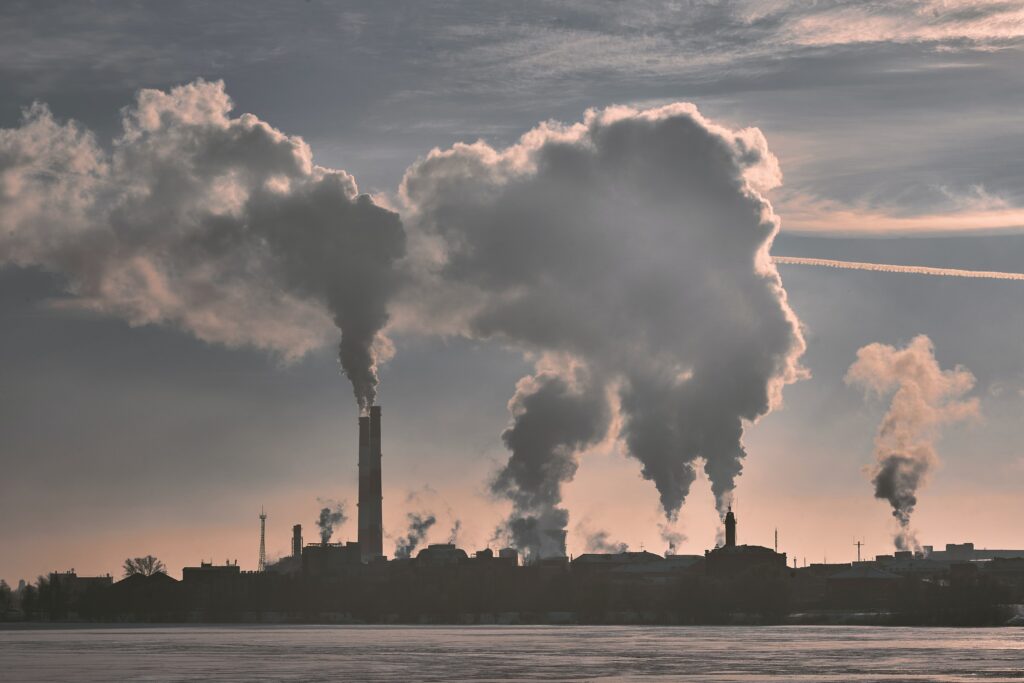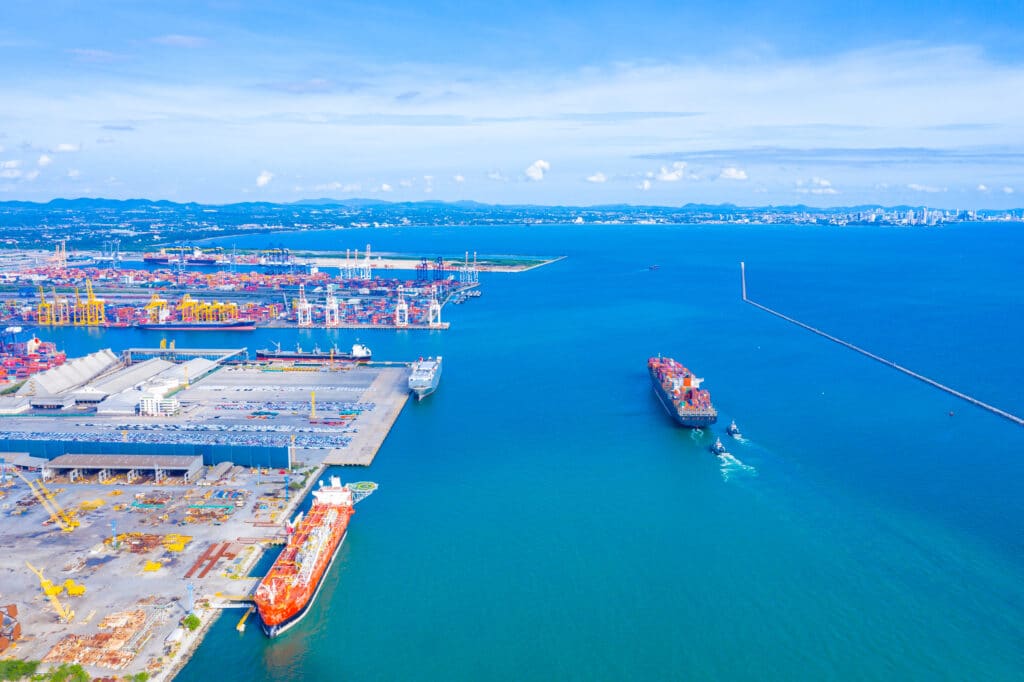Understanding the economic impacts of climate change is crucial to the future of ports and the marine industry. The oceans carry 80% of world trade. Consequently, port infrastructure and shipping are critical to ensuring the smooth operation of global supply chains. This article reviews the potential economic impacts on the ‘Blue economy,’ how ports are being affected, and steps to mitigate the impact of climate change.
How is Climate Change affecting ports and the marine industry?
Climate change is happening and will continue to grow, with impacts felt throughout the marine environment. Carbon emissions continue to increase in spite of intergovernmental action to tackle the issue.
Global temperatures are forecast to rise, leading to an increasing frequency and intensity of climate-related hazards such as tropical storms, rising sea levels, inland flooding, drought, and extreme heat events.
The effects of climate change are being felt across the world. This is creating challenges for ports and the marine industry and disrupting trade operations. Furthermore, it provides a threat to the future sustainability of seaports and their related infrastructure. The following are examples of the impacts on ports and shipping:
- Damage to port infrastructure, due to flooding and other weather conditions
- Temporary port closures
- Increasing risk and frequency of shipping vessel incidents
- Dealing with coastal erosion
- Re-routing shipping vessels
- Blocking of key sea routes and waterways
All these impacts are different by region.
Damage to port infrastructure leads to temporary closure in China.
The arrival of Typhoon Chantu at the port of Shanghai in September 2021 is a prime example of the impacts of climate change and the economic costs.
The extreme weather conditions due to the typhoon led to a shutdown at the port, which lasted two weeks, adversely affecting the global supply chain. The estimated costs were $14 billion dollars.
Shipping vessel runs aground – blocking crucial trade routes
The grounding of the 200,000 metric ton vessel Evergreen attracted headlines across the world in 2021. One of the world’s largest container ships experienced extreme and strong gusts of wind forcing the shipping vessel to run aground, blocking the Suez Canal for a week. The economic costs were up to $14-$15 million in lost revenue per day, impacting thousands of businesses across the globe.
Re-routing shipping routes
Shipping vessels can use up to 150 tons of fuel a day. Therefore, in the event of re-routing, the costs can reach $75,000 each day.
Your environmental monitoring at your fingertips!
Optimize your environmental monitoring, become smarter and more sustainable with a unified system that gathers all your environmental sensors & data in one place.

What are the projections for Climate Change?
In June 2021, the United Nations Conference on Trade and Development (UNCTAD) published a report on climate change impacts and risks on seaports, highlighting the implications for sustainable trade.
A key driver of climate change is the greenhouse effect due to rising emissions from human activities such as the burning of coal, oil & gas, and deforestation to give just two examples.
Global warming which results is causing sea levels to rise. Projections contained in the UNCTAD report predict temperatures will reach 1.5°C above pre-industrial levels by the 2030s. Furthermore, despite an emission dip during the COVID-19 pandemic, the world may see temperatures rising by more than 3°C this century. These predictions are in excess of the 2021 Paris Agreement goals to limit global warming to well below 2°C with the objective of limiting the increase to 1.5°C.
Why is tackling Climate Change crucial for the future of ports?

Confronting the economic impacts of climate change on ports and the marine sector is critical: for global trade, for employment, to maintain the supply of food and other essential goods.
The Swiss Re Institute report estimated that global GDP could shrink by 18% if temperatures increase by 3.2°C. Over the past four decades, shipping and global trade has become increasingly important to sustain the demand for consumer products as well as basic food supplies.
Which ports are likely to be most affected by Climate Change?
Research published in November 2020 estimated the climate change risk to global port operations. This report assessed the global risk across the operations of 2,013 ports worldwide and the impacts under a high-end warming scenario. It concluded that ports located in the Pacific Islands, Caribbean Sea, and the Indian Ocean seem to be at substantial risk by 2100. Finally, it identified ports in the African, Mediterranean, and Arabian Peninsula (the Persian Gulf and the Red Sea) as extremely high risk in terms of climate change impacts.
Your environmental monitoring at your fingertips!
Optimize your environmental monitoring, become smarter and more sustainable with a unified system that gathers all your environmental sensors & data in one place.

How can ports respond to these challenges?
A number of ports are seeking to reduce carbon emissions to mitigate the impacts of climate change. In fact, the next years, even the next days are crucial for limiting these impacts.
In the United States, the Port of Los Angeles has switched to fuels that produce fewer sulfur emissions; it is supplying land-generated electricity to ships docked at port (known as shore powering), reducing vessel speeds, and investing in energy efficiency contributing to emission reductions.
Similarly, at the Port of Baltimore, cargo increased 10 percent between 2012 and 2016. However, overall emissions were reduced by 19%; this was due to the modernization of cargo handling equipment, the replacement of older drayage trucks (heavy-duty trucks that transport cargo containers), and operational changes.
Conclusion about the economic impact of climate change on ports
Ports and the marine industry need to do more to adapt and mitigate the impacts created by climate change by building long-term resistance to temperature changes and extreme weather events.
Artificial Intelligence (AI) can play a key role in these efforts. AI helps to fight climate change thanks to advanced problem solving, predictability and optimization. It helps humans to calculate predictions and impacts instantly, that would traditionally take us many days, allowing us to fight climate change thanks to real-time data analysis.
Frequently Asked Questions About: Climate Change
As the per United Nations’ definition, climate change refers to long-term shifts in temperatures and weather patterns that can occur naturally but that, nowadays, human activities are the principal cause of climate change, due to burning fossil fuels like coal, oil and gas, which release powerful toxins into the environment.
The concept of “blue economy” refers to an integrated approach based on the sustainable use of oceans and coastal areas to deal with environmental degradation.
Yes, Artificial Intelligence can help to reduce climate change thanks to its quick processing of advanced data, which in turn leads to predictability, forecasting, and real-time problem-solving.
It is the digitization of maritime processes. Thanks to maritime digitalization, the maritime industry can tackle and overcome many challenges as port operations become safer, more efficient, reliable, accurate, and traceable.





